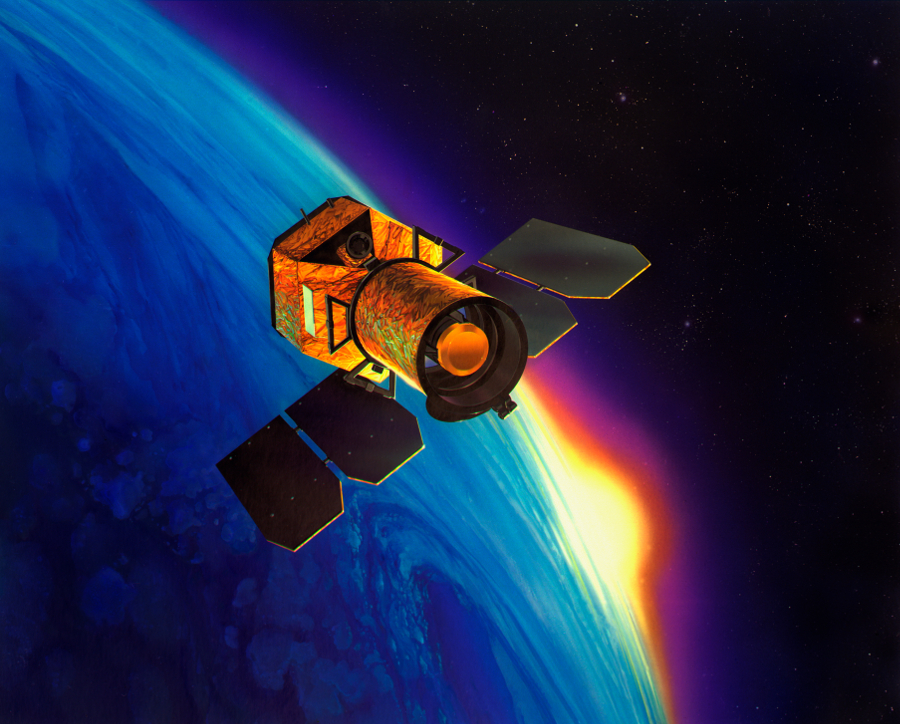
 Credit: NASA/JPL-Caltech
Credit: NASA/JPL-Caltech
Goodbye, GALEX
The Galaxy Evolution Explorer, or GALEX as it was commonly known, was launched on April 28, 2003 with a mission to study high energy ultraviolet light throughout the Universe. UV radiation is produced by hot young stars so is a good signature of stellar birthsites and the processes by which stars form and shape their host galaxies, but it's mostly blocked by earth's atmosphere, and so must be studied from space. GALEX was a small explorer-class space telescope and true to its name, GALEX studied hundreds of millions of galaxies across 10 billion years of cosmic time. GALEX' notable accomplishments include the discovery of a gargantuan, comet-like tail behind a speeding star called Mira; identifying the largest known spiral galaxy; finding giant rings of new stars around old, dead galaxies; and providing idependent confirmation of the mysterious nature of dark energy. After a long, successful career, GALEX was decomissioned at 12:09 p.m. PDT (3:09 p.m. EDT) Friday, June 28. The spacecraft will remain in orbit for at least 65 years, after which the decay of its orbit will cause it to fall to Earth and burn up in the atmosphere.
Published: July 8, 2013
<
HEA Dictionary ● Archive
● Search HEAPOW
● Other Languages
● HEAPOW on Facebook
● Download all Images
● Education ● HEAD
>

Each week the HEASARC
brings you new, exciting and beautiful images from X-ray and Gamma ray
astronomy. Check back each week and be sure to check out the HEAPOW archive!
Page Author: Dr. Michael F. Corcoran
Last modified Tuesday, 27-Feb-2024 10:13:24 EST


